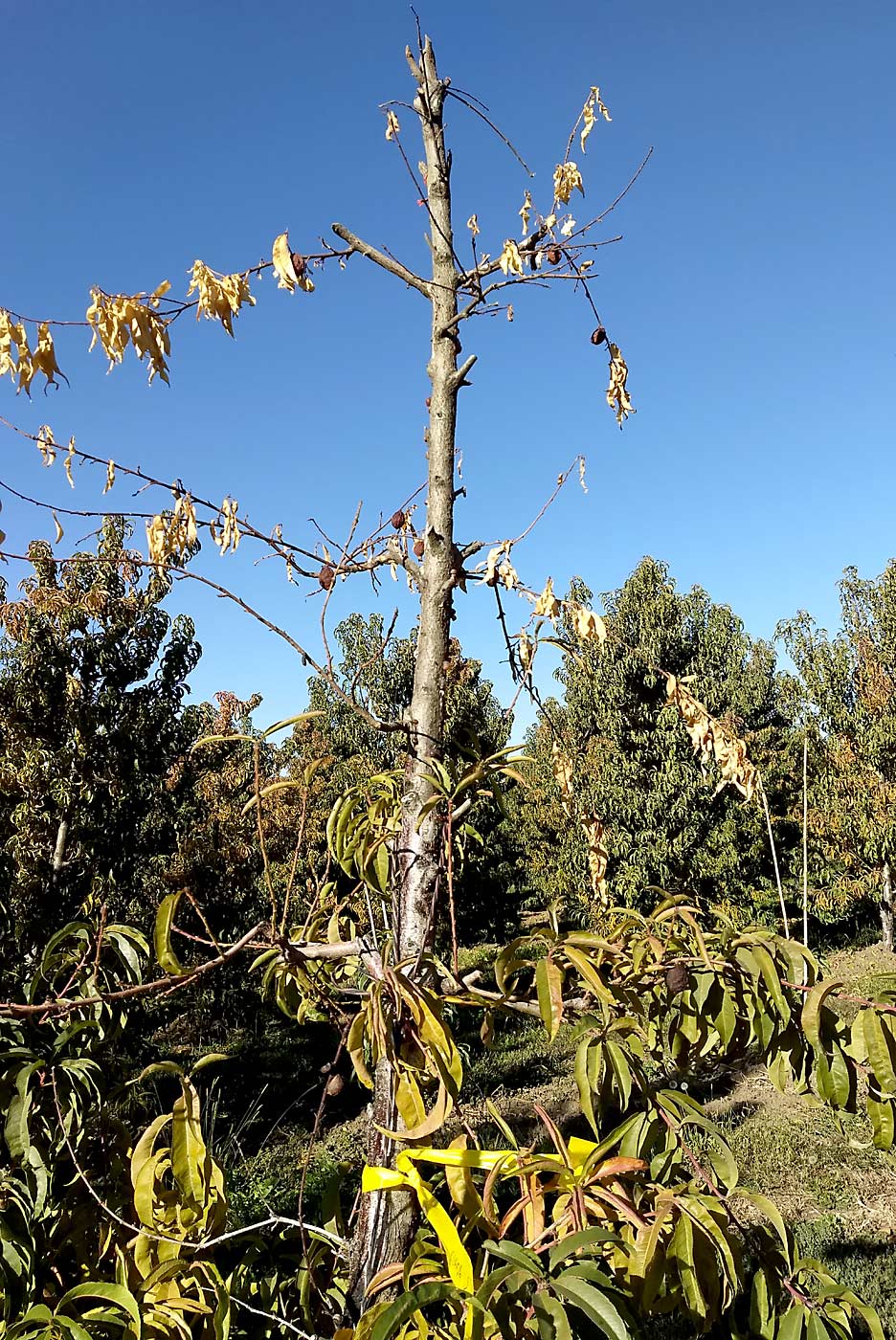
Washington cherry growers, by now, know the dangers of phytoplasmas that cause little cherry disease and are on the lookout for symptoms.
Peach and nectarine growers are now wondering if they have similar problems — problems they have always just blamed on winter injury or some other traditional cause.
“This year, we got a couple of calls to look at some very unhappy-looking peaches and nectarines in two sites in two different counties and, well, we found a couple of phytoplasmas in there,” said Scott Harper, director of the Clean Plant Center Northwest.
To explore further, Harper has begun a three-year, fact-finding mission to determine the nature of the phytoplasmas, how prevalent they are and what to do about them. His work was funded with $92,000 from the Washington Tree Fruit Research Commission.
“I didn’t want this to be another boogeyman, but I think the sooner we get some good information on this, the sooner we can know how to manage it,” said Jim Doornink, a Wapato, Washington, grower and chair of the Research Commission’s stone fruit committee.
Harper and his team identified the two phytoplasmas — Western X and peach yellow leaf roll phytoplasma, also known as pear decline.
Western X should sound familiar as one of the pathogens linked to little cherry disease, by now well-known across the Pacific Northwest.
But Western X affects stone fruit, too, Harper said. It might be the cause of peach rosette and peach yellows — which lead to problems with leaves and fruit size and distorted or misshapen fruit — noted in the Carolinas and Georgia. Generally, it will kill a tree gradually over the course of five to 10 years.
Pear decline kills a tree faster, usually within three to five years, Harper said. First, leaves twist and curl downward, then they turn yellow and drop, affecting fruit quality and size. The problem is common in California and it’s possibly moving north.
Plant pathologists know of a third phytoplasma in Washington — asteris — but don’t know if it’s causing any damage. It begets small leaves, affects tree vigor and fruit size and causes a condition named peach little leaf.
[/fusion_builder_column]
“So, they’re out there,” Harper said. “We know they’re in the country, we know material is moving up and down and around the country and from every state, and it’s very hard to track these things.”
Meanwhile, the phytoplasmas do not distinguish between cherries, peaches and nectarines. They may affect other forms of stone fruit, too, Harper said. Part of his project involves determining how to combat phytoplasmas throughout the whole fruit industry.
“The entire system is connected,” he said. “We solve the whole thing, or we just keep putting out fires.”
The diseases have no cure. By the time symptoms appear, growers usually must cut down the entire tree.
For the project, Harper wants to answer three questions:
1. What phytoplasmas are in Washington? He will survey stone fruits, including cherries, to look for them and identify them.
2. How can growers identify them with physiological markers? He wants to link symptoms in fruit and phloem of infected fruit to the type and severity of the phytoplasmas.
3. How do they work? He will use transcriptomics to identify how the phytoplasmas caused tree illnesses.
One grower said he hopes Harper’s research leads to some solid practical information about how to recognize the problems in the field, similar to the way cherry growers are learning to spot little cherry disease.
“I would be interested in getting up-to-speed in the stone fruit the same as the cherry guys have,” said Paul Stiekema, general manager of Douglas Ag Services, the production arm of Douglas Fruit Co. in Pasco, Washington.
Most stone fruit growers also have cherries, Doornink said in a follow-up interview with Good Fruit Grower. They hope Harper’s research gives them more tools to manage all their crops.
“It would be a shame to go down the slow road on stone fruit and get caught with the same disease,” Doornink said. •
—by Ross Courtney






Leave A Comment